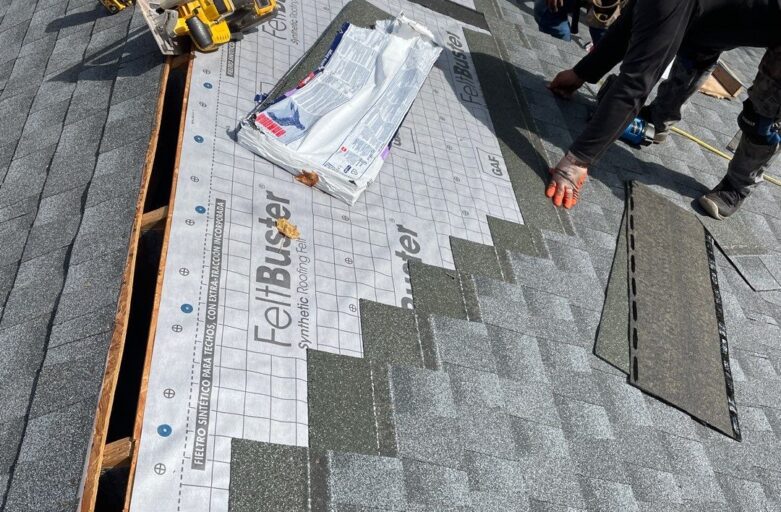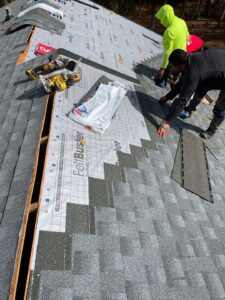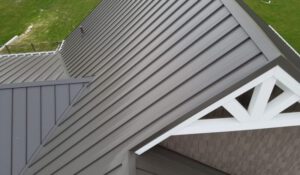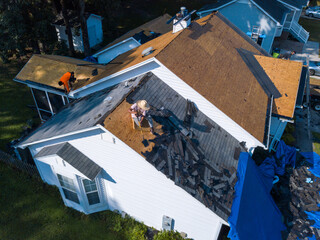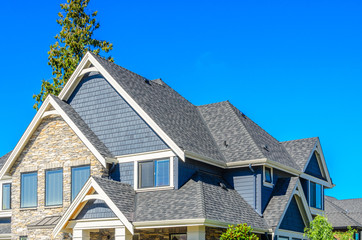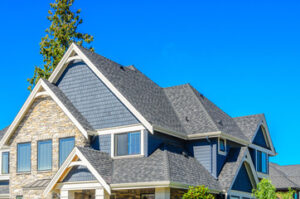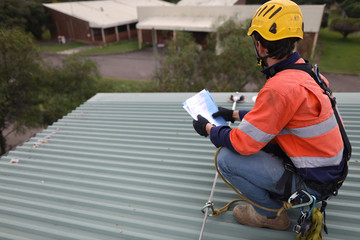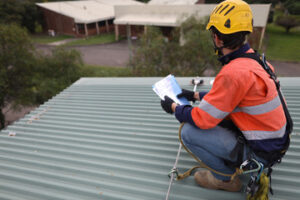Roofing Contractors In Columbus GA manage all aspects of the roofing process. They work closely with building professionals to ensure roofing tasks are executed efficiently and effectively.

They assess the nature of your roofing project to determine the necessary phases and crews. They also help you navigate through permits and inspections.
They will use specialized tools and skills to install shingles, slate, tile, and other types of roofs.
Roofing contractors are trained to supervise all aspects of a re-roofing project from start to finish, and know how to keep the process running smoothly. They also have a solid understanding of construction and can make recommendations based on your property’s unique needs. A reputable roofing contractor will be licensed and insured, so you don’t have to worry about being scammed or getting poor work. They will also provide you with a contract in writing that spells out the scope of the job, materials, timeline for completion, warranty information, and payment terms.
Another sign of a quality roofing contractor is their craftsmanship and attention to detail. Check out a contractor’s website to see their portfolios, testimonials, and verified credentials. A good roofing contractor will also be able to answer any questions you might have in a professional and timely manner. Ask for a referral from friends and family members who have recently had their roof replaced. It’s a great way to find out about the experience they had with their roofing contractor, and whether they were satisfied with the work.
Be wary of contractors who try to avoid giving you a written estimate. They may tell you they can’t give you an upfront estimate because they have to file an insurance claim, and they will want you to hire them to handle the insurance claim for you. This is a huge red flag that you should be extremely careful and only work with a reputable contractor.
If you choose a quality roofing contractor, they will use high-quality materials that are able to withstand New York City weather and hold up for decades. You should never settle for low-quality or generic materials just to save money. This is why it’s important to get a detailed contract from any roofing contractor you choose, and always be sure to read the fine print. The best roofing contractors will offer a full labor and material warranty, as well as a workmanship guarantee. You can also look for a roofing company that offers a multi-point inspection to ensure the work they perform is up to your standards.
Warranty
When it comes to roofing, the warranty provided by the contractor is an important part of the overall purchasing process. As such, it is essential to understand the different types of warranties that are available and what each one covers. This will help you make the best choice when selecting a roofer.
Many roofing contractors will offer a workmanship warranty in addition to the standard manufacturer’s material warranty. Workmanship warranties will cover any errors in the roof installation, while the manufacturer’s material warranty will cover the actual materials used on the roof. Combined, these two forms of protection can save you money and ensure that your new roof will last for as long as possible.
Having a quality warranty is essential to your peace of mind and can provide you with the confidence that you need to invest in a roofing system. Roofing contractors know all about the products they are installing and can provide you with detailed information regarding the warranty. They can also help you understand what is and is not covered by the warranty so that you can decide what type of protection is best for you.
A warranty from a roofing contractor will provide you with a variety of benefits that can be valuable to you, including the ability to have any issues resolved quickly and efficiently. These professionals have years of experience in dealing with the various aspects of roofing, from the initial design and engineering phase to construction and installation. They have the knowledge and skills to tackle difficult or complex projects, address any unexpected problems that might arise and keep the project on schedule and budget.
Typically, roofing contractors will also be able to offer you more extended warranty coverage than would be available through the manufacturers themselves. This is especially true for contractors who are a preferred contractor of a certain product. Artisan Quality Roofing, for example, is qualified as a preferred contractor through Owens Corning and can offer the Preferred Protection Ltd. Warranty, which extends the standard manufacturer’s TRU PROtection period to 50 years.
Save Time
If you’re a homeowner with enough experience and the right tools, you can save money by doing some of the work yourself instead of hiring someone to do it for you. However, the best way to save money on a new roof is by working closely with your contractor from start to finish. Roofing contractors know exactly what it takes to manage the various aspects of the re-roofing process and can help you avoid problems that may arise during the installation. They can also provide you with a more accurate estimate and help you decide what type of materials to use. They can even handle the removal and disposal of any discarded building materials once the project is finished.
It’s important to find a roofing contractor who is licensed and has valid insurance coverage before beginning any work. This includes workers’ compensation and general liability insurance as well as proof of bonding. Insist on seeing these documents before making any decisions. You should also be able to verify the insurance coverage through a phone call to their insurance company.
A good roofing contractor is experienced in both the construction and insurance industry. They can provide you with a complete project assessment and estimate, including material costs, labor, and equipment needed to get the job done. They also understand local code requirements and can shepherd the project through the necessary inspections and permitting. In addition, they can help you choose the best roofing products for your home and advise you on how to maintain them.
When choosing a roofing contractor, it’s important to consider how long they have been in business and whether or not they offer a warranty on their work. It’s also a good idea to check with the Better Business Bureau to see any complaints against them and what was done about them.
The best time to have your roof replaced is in the fall. This season is usually slower for roofing contractors, so you can expect to receive a lower price. The weather isn’t as hot or humid, and it’s less likely that a sudden rainstorm will cause delays.
Save Money
When working on an important project, it can be tempting to cut corners. However, doing so can often backfire. A quality roofing contractor will help their clients choose high-quality materials that will be long-lasting and durable, but will also work within a client’s budget.
Using a professional will often save time, money and energy. Getting a quote from a number of contractors can allow homeowners to compare prices and see what they are getting for their investment. Professionals know how to work with various building material manufacturers and can often find the best pricing options for a specific job.
Homeowners should always ask to see a roofing contractor’s proof of insurance coverage before hiring them for a job. This should include both liability and workers’ compensation insurance that covers the duration of the project. This is especially important since so many sources of homeowner dissatisfaction involve uninsured or under-capitalized contractors.
A good roofing contractor will be able to provide the specific details of their insurance policies, including their coverage limits and contact information for their insurance agent. They should be able to provide a full scope of work and estimate for the job as well.
Some contractors will also offer a variety of payment methods to help their clients save on the cost of the roof. For example, some will offer financing that can be compared to personal loans and home equity loan rates. In addition, some may even be able to offer the option of paying for a new roof in installments.
In addition to roofing, some contractors will also offer gutter, siding and window installation services. By choosing a general contractor that can do multiple types of jobs, homeowners will often be able to cut down on costs by doing all the work at once. In addition, it can be helpful to work with a roofing contractor that is familiar with the local building codes and requirements for each type of home improvement project. This can reduce the likelihood of errors that would require costly corrections in the future. It is also a good idea to find out if the roofing contractor can provide references for past projects in addition to their qualifications and credentials.

